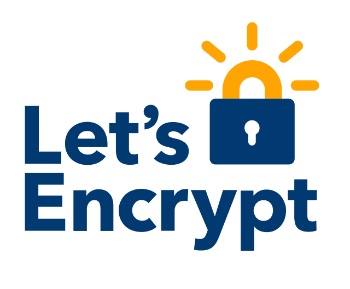SSL certificate is mainly used on a web server to encrypt traffic between the server and client, providing an extra layer of security for your users.
Not only that..
Do you know that you can get better search engine ranking with HTTPS?
Back in 2014, Google made changes to its search algorithm to give a slight ranking boost to HTTPS-enabled websites.
A study on 1 million Google search results by Brian Dean revealed that HTTPS had a reasonably strong correlation with first page Google Ranking.
In addition to that with the release of Chrome 68 in July 2018, Google Chrome will mark all sites that haven’t adopted HTTPS as not secured.
In this tutorial, I will show you how you could install a free Let’s Encrypt SSL certificate in less than 10 minutes.
What’s Let’s Encrypt?
Let’s Encrypt is a free, automated, and open certificate authority (CA), run for the public’s benefit. It is a service provided by the Internet Security Research Group (ISRG).
Yep, you read it right.
It’s a free SSL certificate backed by the big brands of the internet like Google, Facebook, SiteGround, Microsoft, and more.
And as of July 2018, Let’s Encrypt Root is trusted by all major Root programs.
Additional resources on the benefit of SSL certificate:
- Why An SSL Certificate Is Important For Your Company Website
- Do SSL Certificates Affect Search Rankings? (A Data Driven Answer…)
Choose a Let’s Encrypt Client
Let’s Encrypt uses ACME protocol to verify you control a domain name (in this case, your domain) and issue you an SSL certificate.
To get the SSL certificate, you need to choose an ACME client to install on your hosting. At the time of writing, there are over 138 compatible clients you could choose from.
The recommended client to install is Certbot. It’s easy to install on your web hosting.
I’m gonna show you how to that in the next section.
If you don’t have SSH access to your hosting to install Certbot, you can use another client, SSL for Free, to generate the free SSL certificate for you.
Install Let’s Encrypt SSL
In this section, I will show you how to install Certbot client on your web hosting.
Head over to Certbot and choose the server and system you’re running. For the example below, I chose Nginx and Ubuntu 14.04.
Next, login to your server via SSH and run the following commands one at a time to install Certbort. The commands look something like this:
$ sudo apt-get update
$ sudo apt-get install software-properties-common
$ sudo add-apt-repository ppa:certbot/certbot
$ sudo apt-get update
$ sudo apt-get install python-certbot-apache
Finally, simply run this command to get the certificate and let Certbot configure your server configuration for you, automatically.
$ sudo certbot --apache
The SSL certificate should be properly configured on your server now.
If you know what you’re doing and want to get your hand dirty, run the following command instead to tell Certbot to get the certificate ONLY. You’ll have to make changes to the configuration yourself.
$ sudo certbot --apache certonly
Check out the video below to find out how you could configure your server manually.
Certbot: Nginx + Ubuntu 14.04
TIPS: If you don’t see a green lock next to your domain name, make sure all asset (images, javascript, CSS) files loaded on your website is using https.
SSL for Free
TIPS: If you’re running WordPress, make sure you update your WordPress site URL from http to https.
Don’t Forget to Configure Auto Renewal
By default, Let’s Encrypt certificates only last for 90 days. So, the next thing you need to do is to set up auto-renewal of your certificate so it doesn’t get expired.
The good news is Certbot got it covered. When you installed Certbot on your system, Certbot set up a cron job that will renew the certificate before they expire.
To make sure everything works as it is, runs the command below to test the automatic renewal.
$ sudo certbot renew --dry-run
Final Thoughts
Installing SSL certificate has never been easier thanks to Let’s Encrypt. Once you completed the steps above you should be able to access your site via https and you should see the little green lock icon and the word Secure.
With all the benefits of SSL certificate, you could get for your blog or website plus the SEO boost, installing SSL is an easy and quick win task for you.
I highly recommend you to install SSL certificate on your website if you haven’t done so.
Additional resources on starting your own blog:
Yuyu
I am a front-end developer and I teaches entrepreneurs who want to grow their audience, start an online business, and pursue their dream life. When I spend time away from the computer, I enjoy reading books and having a cup of green tea.
2 Comments
Add comment Cancel reply
This site uses Akismet to reduce spam. Learn how your comment data is processed.

Oh man….. I wish I had this post for when I installed my SSL! That was a nightmare for me as I am not tech savvy by any means. And I also wished that I had done it in at the start. Losing my social counts after going from http:// to https:// was a seriously painful experience.
Hi Amy, glad that you found it useful. I hope you managed to retrieve your social counts after switching from http:// to https://. If not, you could use Social Warfare that could recover those social counts automatically for you.